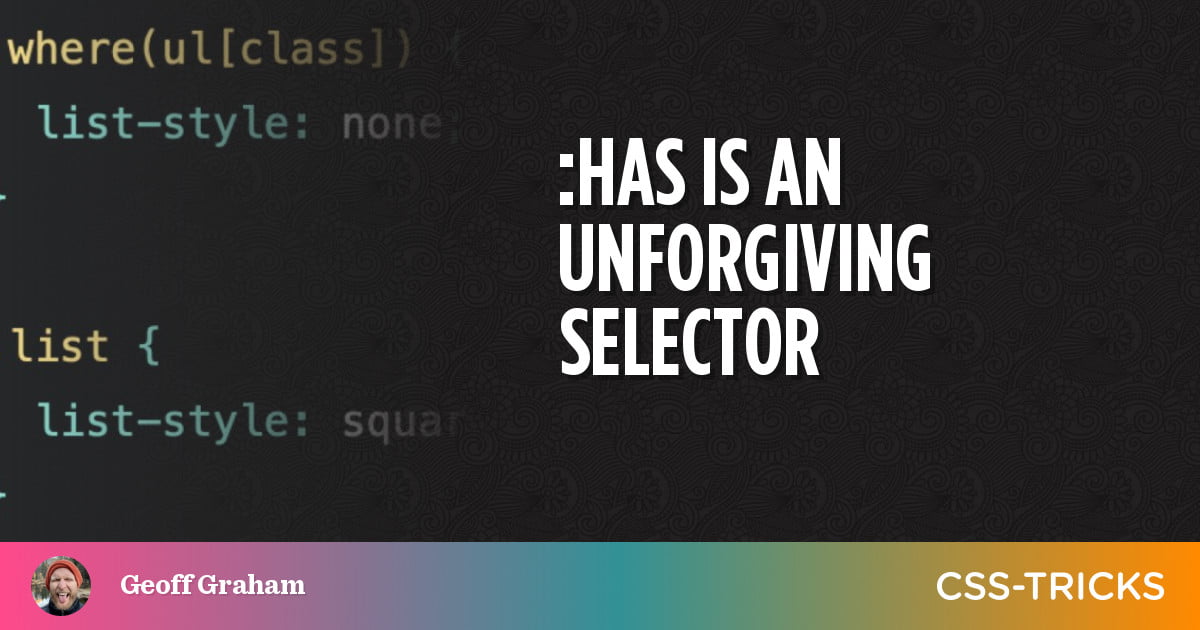
A little thing happened on the way to publishing the CSS :has() selector to the ol’ Almanac. I had originally described :has() as a “forgiving” selector, the idea being that anything in its argument is evaluated, even if one or more of the items is invalid.
/* Example: Do not use! */
article:has(h2, ul, ::-scoobydoo) { }See ::scoobydoo in there? That’s totally invalid. A forgiving selector list ignores that bogus selector and proceeds to evaluate the rest of the items as if it were written like this:
article:has(h2, ul) { }
:has() was indeed a forgiving selector in a previous draft dated May 7, 2022. But that changed after an issue was reported that the forgiving nature conflicts with jQuery when :has() contains a complex selector (e.g. header h2 + p). The W3C landed on a resolution to make :has() an “unforgiving” selector just a few weeks ago.
So, our previous example? The entire selector list is invalid because the bogus selector is invalid. But the other two forgiving selectors, :is() and :where(), are left unchanged.
There’s a bit of a workaround for this. Remember, :is() and :where()are forgiving, even if :has() is not. That means we can nest either of the those selectors in :has() to get more forgiving behavior:
article:has(:where(h2, ul, ::-scoobydoo)) { }Which one you use might matter because the specificity of :is() is determined by the most specific item in its list. So, if you need to something less specific you’d do better reaching for :where() since it does not add to the specificity score.
/* Specificity: (0,0,1) */
article:has(:where(h2, ul, ::-scoobydoo)) { } /* Specificity: (0,0,2) */
article:has(:is(h2, ul, ::-scoobydoo)) { }We updated a few of our posts to reflect the latest info. I’m seeing plenty of others in the wild that need to be updated, so just a little PSA for anyone who needs to do the same.





